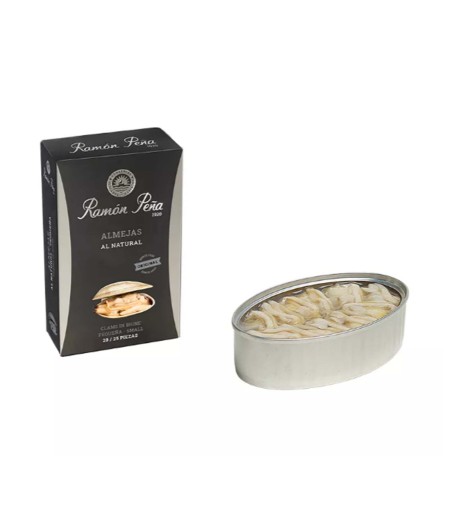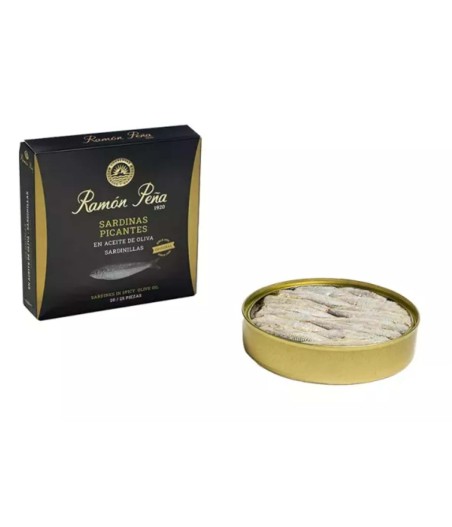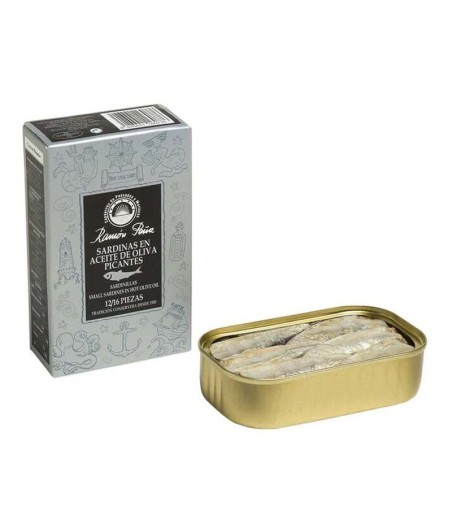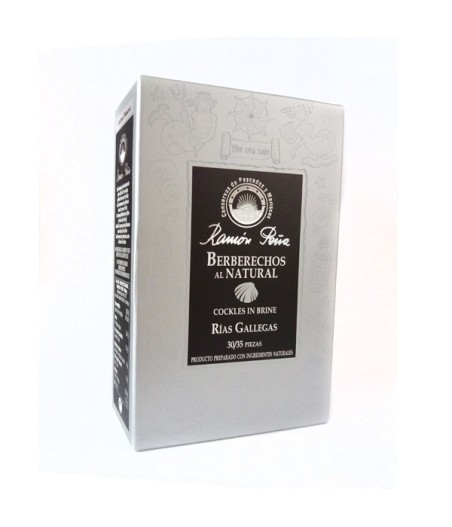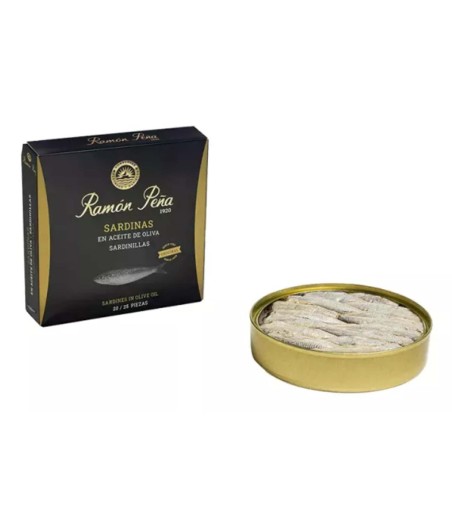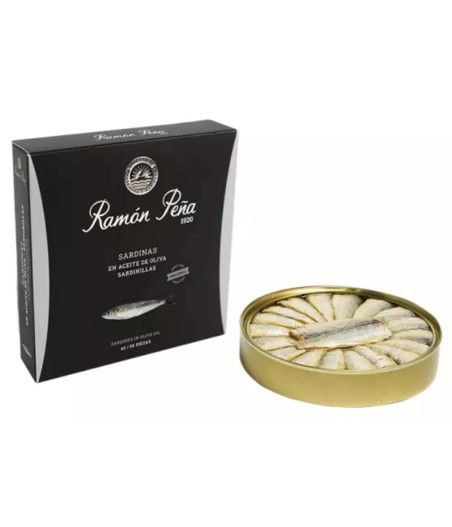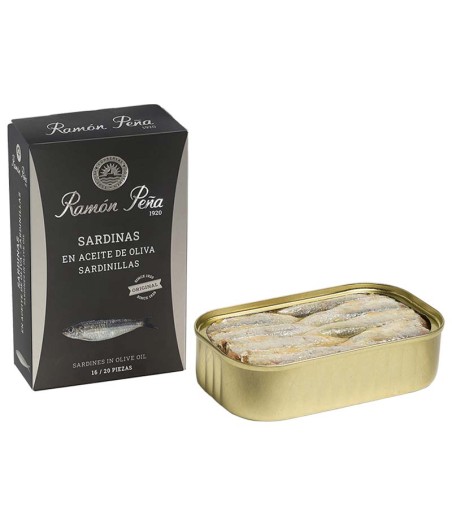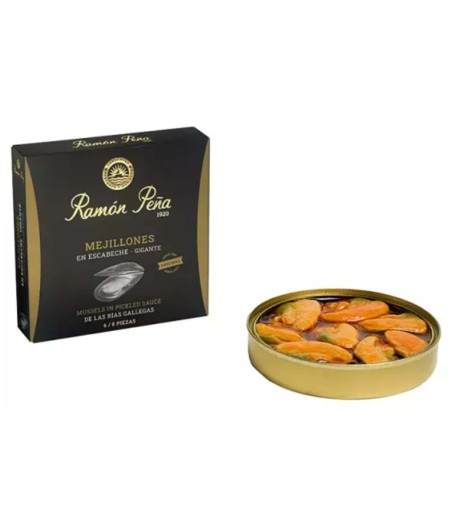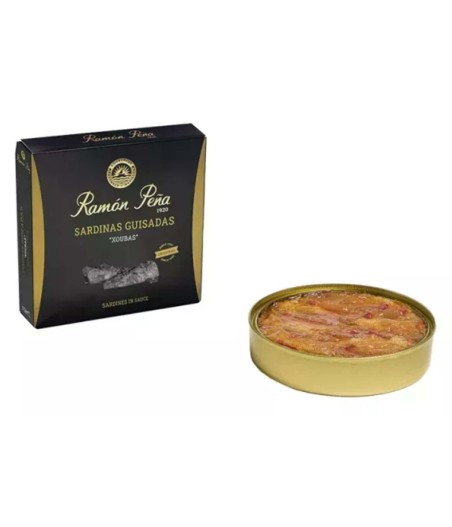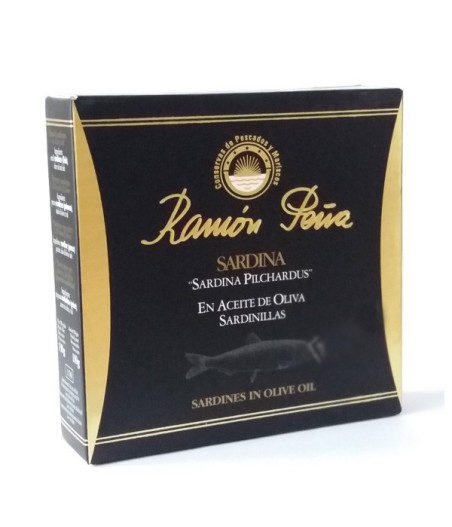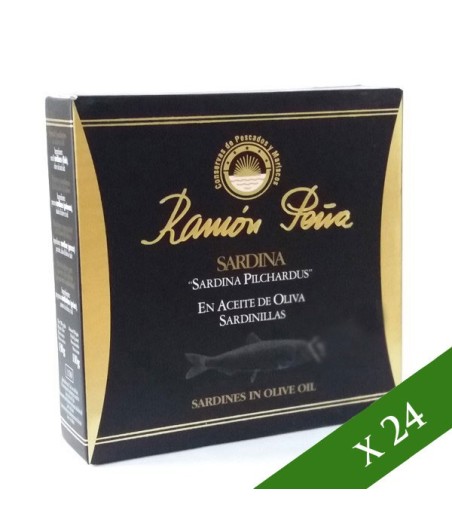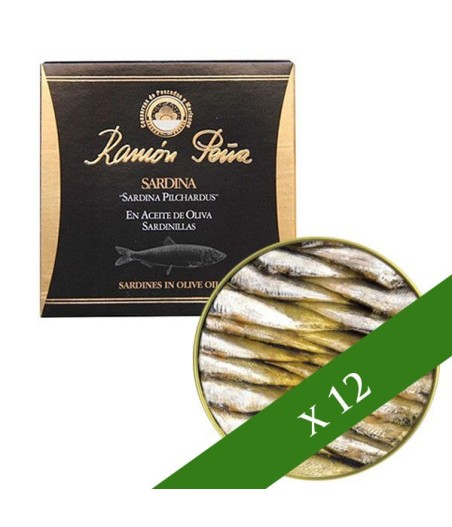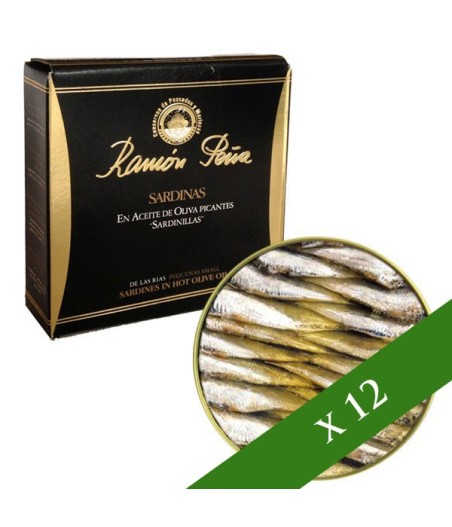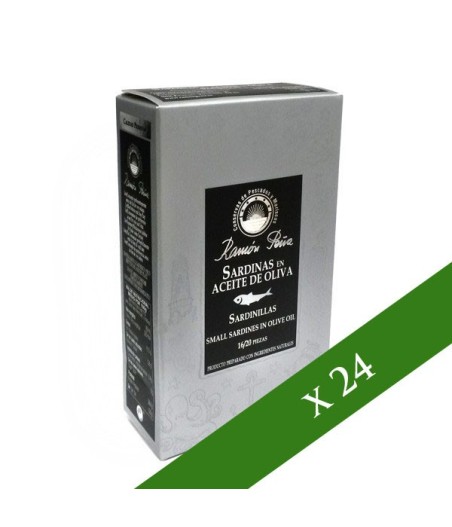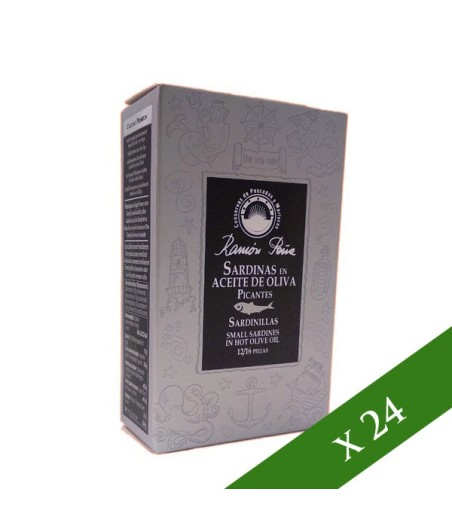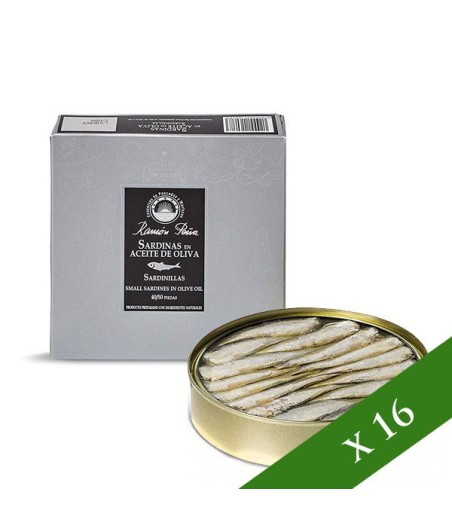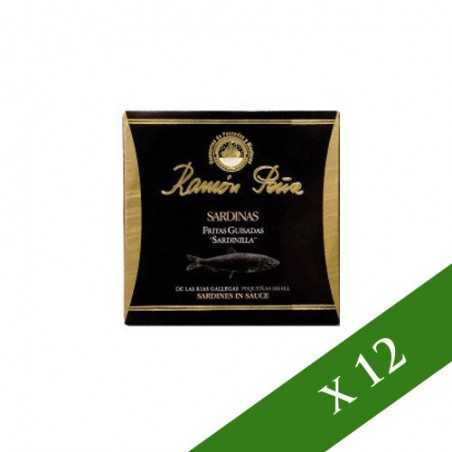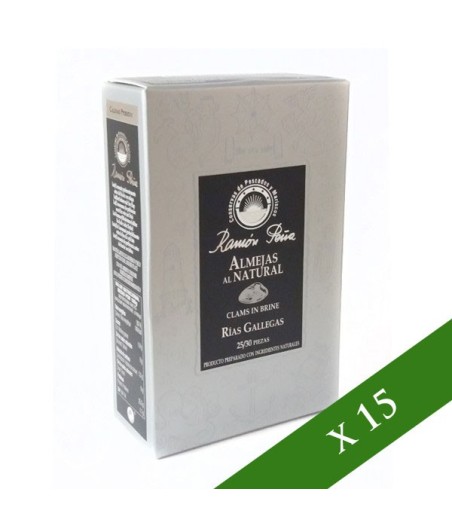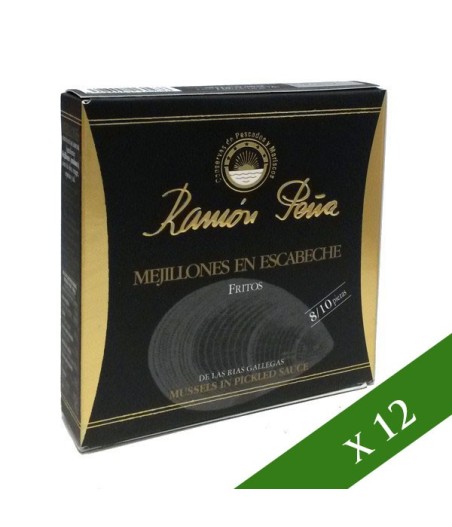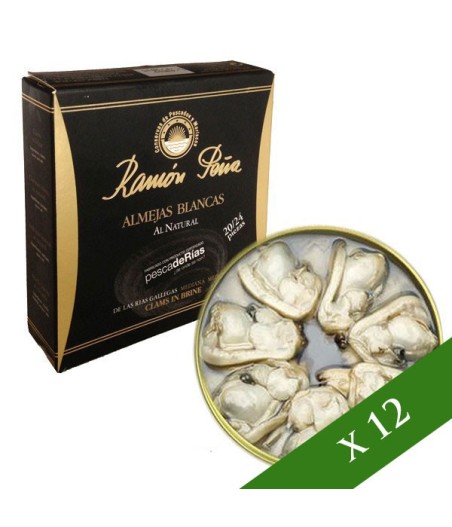Ramón Peña, fish and sellfish canning from the Atlantic
Our preserves Ramón Peña
1. Ramón Peña, delights of the Atlantic Galicia
In Cambados (Galicia), aound 1920, it was established small fish and shellfish canning factory. Years later, this factory became one of the most important in Galicia. The key point of success was the quality commitment, holding it as fundamental of the philosophy of the company after three generations.
The selection of the raw material is thorough, the best fish and sellfish, as far as the selection of the ingredients. With a craftwork and fidelity in the exclusive and original recipes, with care and dedication, and with over 90 years of experience.
With the 3rd generation, Conservas Hijos de Ramón Peña, S.L. starts a new stage. It’s from 1993 when they focus their trayectory towards a more selected, prestigious and with bigger quality, choosing for the brand the best raw materials (from Rías Gallegas and the Atlantic), always in the most traditional way.
With this change, the company is focus on getting the best quality product, and to keep a high level of control during the process and in the ingredients, as it is the olive oil, paprika, ecc. Ramón Peña offers more than 50 products, highlighting the cockles, clams, razor clams, mussels and also small sardines, eel, cod and hake fish roe.

Buy online all Ramón Peña products
2. The key to success: tradition and craftwork
During the whole production process, Ramón Peña has special care with the traditional elaboration, mime in the manufacture and specialization. With special treatment for its customers, trying to create culture in the world of canning, make them understand the origin of the product, transformation and evolution to the final result: "The can and its contents."
3. Where are the canning coming from?
This very peculiar fact of cooking food and vacuum packaging them was the brainchild of a Frenchman, under Napoleon, who promised a prize to anyone who will help preserve food.
This young French cooker, Nicolás Appert, he began to experiment and observe that boiled food more than 80 degrees without being exposed to air, lasted longer without being spoiling.
The tinplate was invented by an Englishman whose name was Peter Durand.
In Spain we met the canning food because of a French ship, that was shipwrecked in the Costa da Morte. The following year there were a cannery in Galicia.
The fish canning are all a classic in Spanish grastronomy. Every year, a Spanish person eats more than 4Kg. The most consumed product is the mussel, specially in scallop sauce and brine sauce.

4. The production process of the Ramón Peña canning
The first step to prepare the canning food, is to clean the sellfish and cook it, after it is fried, as it is the traditional method. Each piece is cleaned manually and with meticulous care, classifying by size.
The sauce in which are preserved contains basic ingredients that enhance their flavor. For example, for the brine sauce, the base ingredients are pepper, bay leaf and cloves, with all this elements, a sauté and it is added paprika, no preservatives or coloring, all the ingredients are natural.
When it comes to packaging, first you pour a base with the sauce, then the mussels and the can is filled with a brine sauce. The brine sauce is decanted for 24 hours, made through a traditional process (two parts of red oil, one part of water and one part of vinegar).
Later, the cans are sealed and sterilized. After the last step, the cans go to the factory, to be packed in boxes and give them entry into the market for subsequent tasting.
5.Technical means and quality commitment
Conservas Hijos de Ramón Peña, S.L. has the most modern and efficient technical means for processing, as autoclave, sealing machine, cartoning, etc., apart from a team of skilled craftsmen, as well as its own laboratory and technical staff to manage it.
In 1998 they built the actual factory, equipping with the technology and cutting edge media production. Quality assurance products "Ramon Peña" with the "Pesca de Rías" seal and ISO 9001 quality certificate.
A number of experts endorse buyers and sailors who know the best fishing grounds and ports where to find the finest sardines, tastiest squid or most coveted razor clams. Given the exclusivity and high quality, it is limited edition products.
The company has ISO 9002 certification, and audits of the Brand "Galicia Calidade" (Society of the Xunta de Galicia) also audit them, as well as several national and international quality awards.
Currently, the company has set its sights on the foreign market, with the help of Pipe (ICEX) plan and by his own efforts, are now present in more than twelve countries (England, France, Norway, etc.) In the future Hijos de Ramón Peña, SL plans to continue to grow sustainably and develop its facilities and invest more in R & D to be developing new products and lines to introduce to the market.

Pizza Ramón Peña
Ingredients:
Tomato, Mozzarella, Anchovies Ramón Peña, Black olives, Red onion, Small pasty mass, Oregano and Olive oil.
Preparation: Grate the tomato and separate the pulp from the water. Fry the small pasty mass.
As the base of the pizza, we use the small pasty mass fried, extend the tomato pulp and small pieces of mozzarella, 2 or 4 olives, anchovies and onion strips. Sprinkle with oregano and a drizzle of olive oil.
We can serve pizzas alone or accompanied of caramelized onion with truffle or macaroni stuffed of pumpkin cream arranged on slices of zucchini.

Tomatoes stuffed of spider crabs
Ingredients
Red tomatoes, Spider crabs (meat) Ramón Peña, Mullet roe, Mayonnaise, Green pepper and Spring onion.
Preparation:
Cut a tomato in half, emptied and reserve the pulp. Make a mayonnaise very soft. Mix the spider craft meat with a bit of mayonnaise, sprinkle green pepper and mix again.
Fill half ot the tomato with this mix and decorate it with a tablespoon of mullet roe and small strips of green pepper.
Accompany it with the pulp of the tomato seasoned with some salt scales and a drizzle of olive oil.
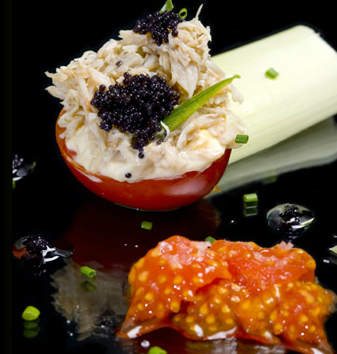
Makis of spider crab
Ingredients:
Meat of spider crab Ramón Peña, Seaweed nori, Small pasty mass, Courgette, Onion, Chives, Mayonnaise, Wasabi and Olive oil.
Preparation: Cut the nori seaweed in rectangles, spread a little of wasabi, add the meat of spider crab and roll up.
Apart, we make a mixture of spider crab meat, a little mayonnaise and a dash of wasabi. We beat slightly (should be thick) and mold a base.
To accompany, sauté the onion in a pan with olive oil. Cut the zucchini into slices fry them slightly in the pan and fry the small pasty mass.
Set the sfuffed makis on the basis of the spider crab and we sprinkle with finely chopped chives. Accompanied by stuffed zucchini onion on the small pasty mass.

Clams in potato and chocolate cream
Ingredients:
Clams Ramón Peña, Potatoes, Olive oil, Pepper and Black chocolate.
Preparation:
Cook the potatoes with the peel and once cooked, peel and whip them with a stream of olive oil and a little broth of clams until the cream is very thin.
In a Martini glass (or similar), put the potatoe cream and on top of it, the clams.

Baby cuttlefish with pasta
Ingredients:
Pasta (whatever you wish), Baby cuttlefish in its ink Ramón Peña, Green pepper, Basil, White pepper and Bay.
Preparation:
In plenty of water with salt and some bay leaves, cook the pasta.
Strain the pasta, drizzle olive oil over and add a pinch of white pepper. Mix it and serve.

 4,9 / 5
4,9 / 5 





